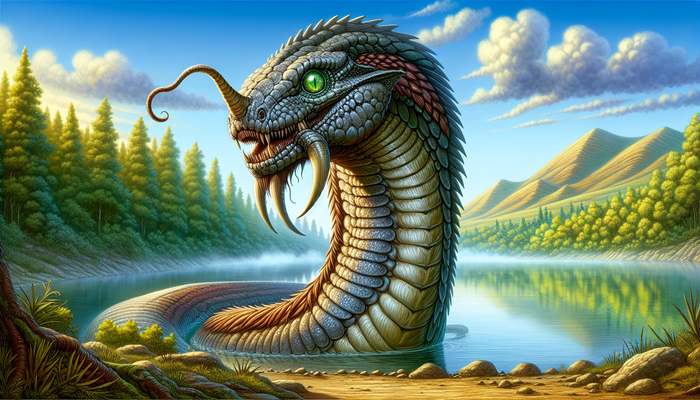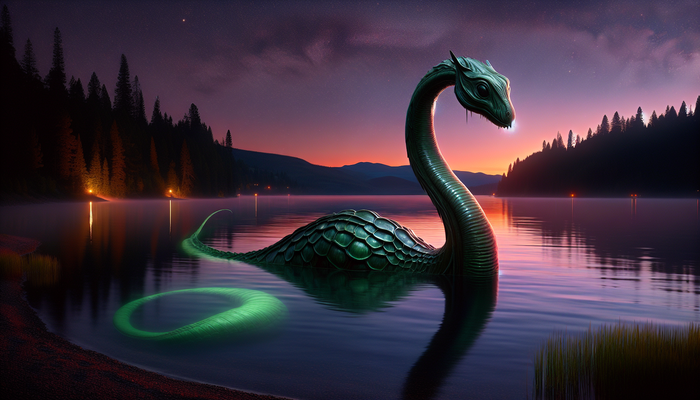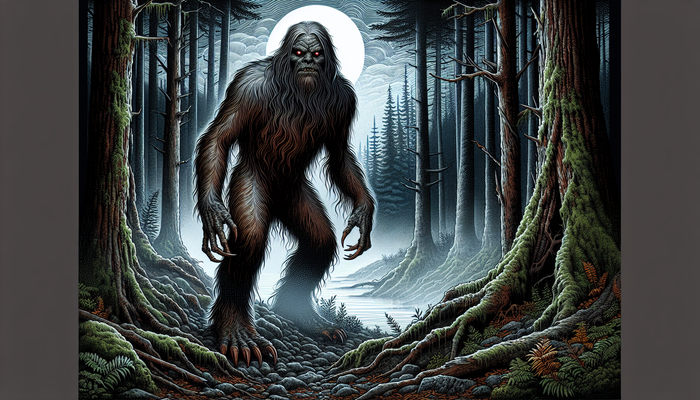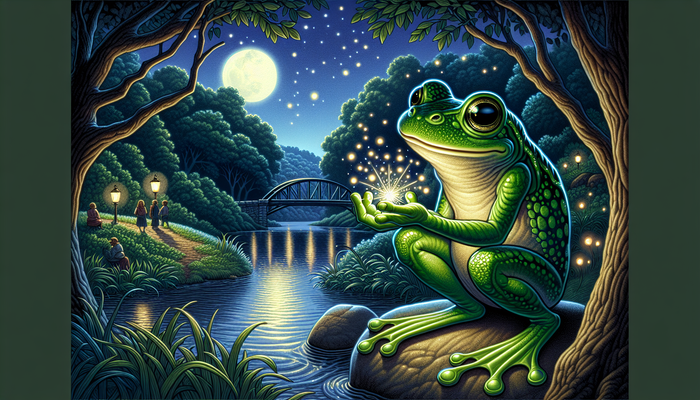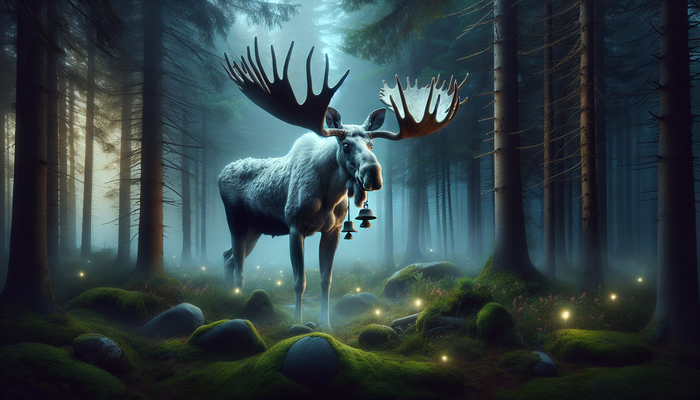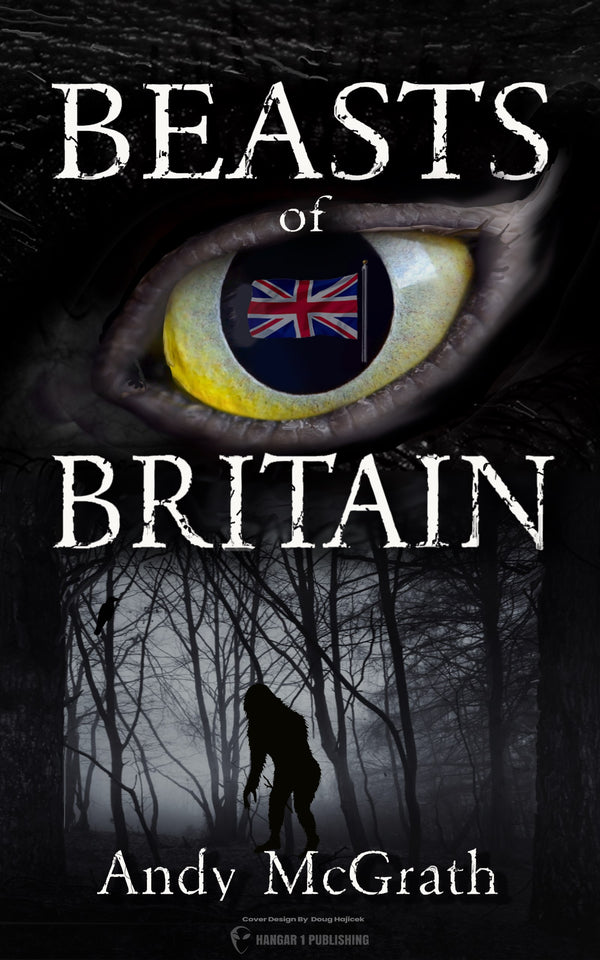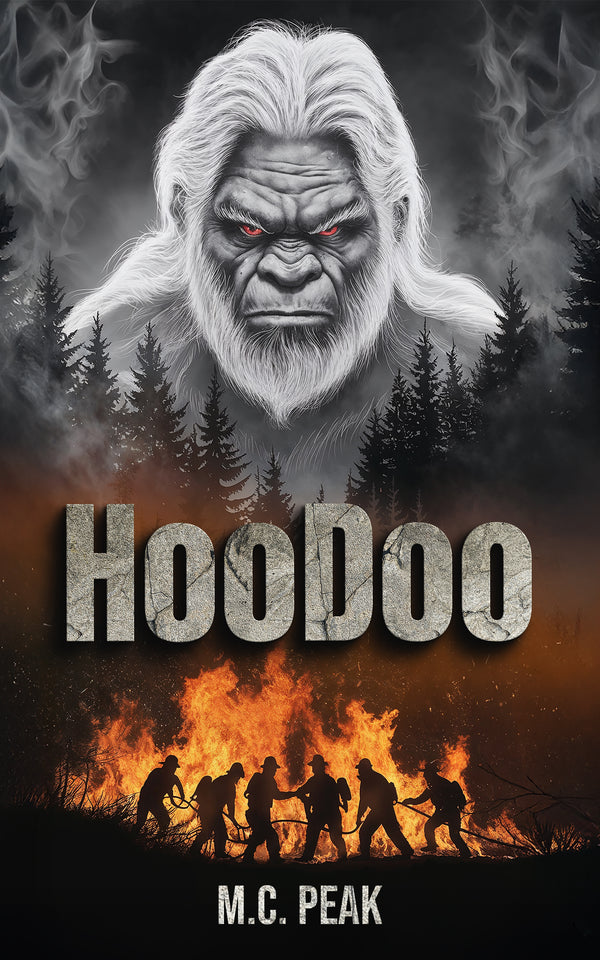Exploring the Fascinating Cryptids of the British Isles
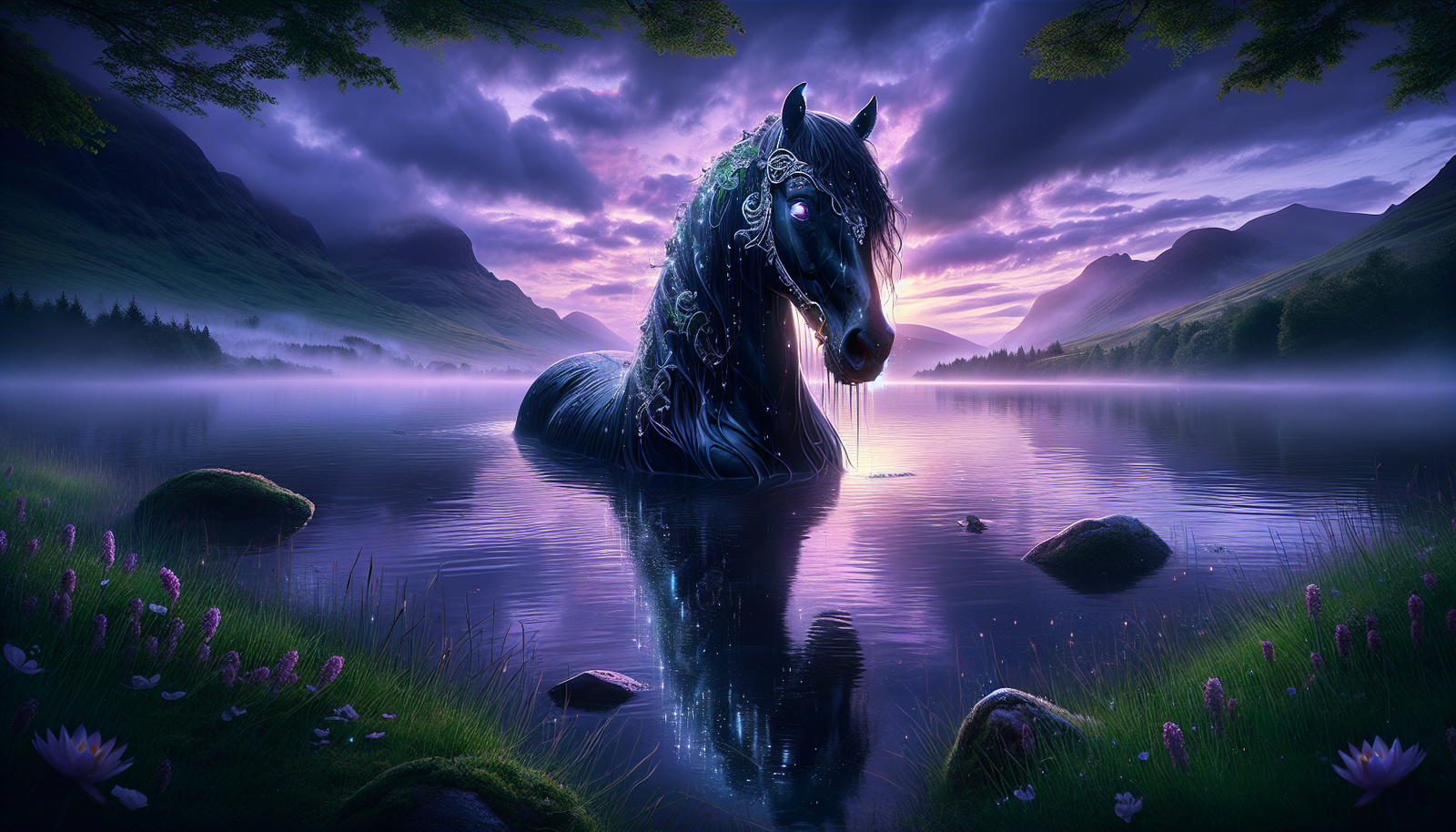
By Dr. Elizabeth Harper, Cryptozoologist
The British Isles, a land steeped in history and mystery, harbors a rich tapestry of folklore teeming with creatures that defy scientific explanation. These enigmatic beings, known as cryptids, have captivated the imagination of locals and visitors alike for centuries. From the murky depths of Loch Ness to the windswept moors of Cornwall, tales of these elusive creatures persist, weaving themselves into the very fabric of British culture.
Cryptids are more than mere figments of imagination; they are reflections of our deepest fears, hopes, and the inexplicable wonders of the natural world. These beings, whose existence lies in the realm between fact and fiction, serve as powerful symbols in local lore, often embodying the essence of their native landscapes and the communities that have given rise to their legends.
The Allure of Cryptids
The fascination with cryptids stems from a primal human desire to explore the unknown and make sense of the world around us. Folklore plays a crucial role in shaping these narratives, often serving as cautionary tales or moral lessons passed down through generations. The stories of cryptids are deeply intertwined with local culture and identity, reflecting the unique characteristics of the regions they inhabit.
Consider the Kelpie, a shape-shifting water spirit of Scottish lore. This creature, often appearing as a beautiful horse, lures unsuspecting victims to watery graves. The Kelpie's tale serves as a warning to children about the dangers of unknown waters, while also embodying the wild, untamed nature of Scotland's lochs and rivers. Such stories not only entertain but also instill a healthy respect for the natural world and its potential dangers.
The psychological impact of cryptids on communities is profound. These creatures often embody societal anxieties, serving as metaphors for the challenges and fears faced by a population. The fear and fascination they inspire can unite communities, creating a shared cultural experience that strengthens local bonds and preserves traditions.
Notable Cryptids of the British Isles
The Loch Ness Monster (Nessie)
No discussion of British cryptids would be complete without mentioning the most famous of them all: the Loch Ness Monster, affectionately known as Nessie. This legendary creature is said to inhabit the depths of Loch Ness, a vast freshwater lake in the Scottish Highlands. Descriptions of Nessie vary, but she is often portrayed as a large, long-necked creature resembling a plesiosaur, an extinct marine reptile from the age of dinosaurs.
The history of Nessie sightings stretches back centuries, with the first recorded encounter dating to the 6th century when Saint Columba allegedly encountered a "water beast" in the River Ness. However, it was in the 1930s that Nessie fever truly gripped the world. The publication of the now-infamous "Surgeon's Photograph" in 1934, purportedly showing the creature's head and neck emerging from the water, catapulted Nessie to international stardom.
Since then, countless expeditions and scientific investigations have sought to uncover the truth behind the Loch Ness Monster. Sonar scans, underwater cameras, and even satellite imagery have been employed in the search for Nessie. While these efforts have yielded intriguing results, including unexplained sonar contacts and curious underwater footage, definitive proof of Nessie's existence remains elusive.
One of the most comprehensive studies of Loch Ness took place in 2018 when an international team of researchers conducted a massive DNA survey of the loch. The study found no evidence of large marine reptiles or unknown species. However, it did reveal a surprisingly high concentration of eel DNA, leading some to speculate that Nessie might be a giant eel – a theory that has gained traction in recent years.
Despite the lack of conclusive evidence, Nessie continues to capture the public imagination and drive tourism to the Scottish Highlands. The creature has become an integral part of Scottish culture, featured in countless books, films, and television shows. Nessie serves as a powerful symbol of the enduring mystery and allure of the natural world, reminding us that there may still be wonders lurking in the depths of our planet's waters.
The Beast of Bodmin Moor
Moving south to the rugged landscape of Cornwall, we encounter another famous British cryptid: the Beast of Bodmin Moor. This elusive creature is described as a large, black, panther-like animal that roams the windswept moors, striking fear into the hearts of locals and livestock alike.
Sightings of the Beast began in earnest in the 1970s, with reports of a large cat stalking the moors and attacking farm animals. Witnesses describe a creature much larger than a domestic cat, with some estimating its length at up to five feet, not including the tail. The Beast is said to move with feline grace, possessing incredible speed and agility.
Theories about the Beast's origins abound. Some believe it to be a descendant of exotic pets released into the wild after the implementation of the Dangerous Wild Animals Act in 1976, which made it illegal to keep certain species without a license. Others speculate that it could be a surviving population of native big cats, long thought extinct in Britain.
The Beast of Bodmin Moor has been the subject of numerous investigations, including an official government inquiry in 1995. While this study concluded that there was no verifiable evidence of a big cat living wild on Bodmin Moor, it also stated that it could not prove that such a creature did not exist. This ambiguous conclusion has only served to fuel further speculation and interest in the Beast.
The legend of the Beast has had a significant impact on local culture and tourism. Bodmin Moor has become a popular destination for cryptid enthusiasts and thrill-seekers hoping to catch a glimpse of the elusive creature. The Beast has also inspired numerous works of fiction and has been featured in documentaries and television shows, cementing its place in British folklore.
Kelpies and Each Uisge
Returning to Scotland, we encounter two of the most fearsome water spirits in British mythology: the Kelpie and the Each Uisge (pronounced "ech-ooshkya"). These shape-shifting creatures are deeply rooted in Celtic folklore and serve as cautionary tales about the dangers of bodies of water.
Kelpies are said to inhabit the rivers and streams of Scotland, often appearing as beautiful horses to lure unsuspecting victims. However, their true nature is revealed by their reversed hooves and constantly dripping manes. Those who mount a Kelpie find themselves stuck to its back, unable to escape as the creature plunges into the depths, drowning its prey.
The Each Uisge, or water horse, is considered even more dangerous than the Kelpie. This creature inhabits the sea lochs and larger bodies of water in Scotland. Like the Kelpie, it can take on various forms, including that of a handsome man or a pony, to attract its victims. However, once a person touches the Each Uisge, they are unable to break free. The creature then races to the deepest part of the loch, where it devours its victim, leaving only the liver to float to the surface.
These water spirits serve as powerful metaphors for the unpredictable and often dangerous nature of Scotland's waterways. Their tales have been passed down through generations, instilling a healthy respect for the power of water and the importance of caution when near rivers and lochs.
The cultural significance of Kelpies and Each Uisge extends beyond their role as cautionary tales. They have inspired numerous works of art, literature, and even modern architecture. The Kelpies, a pair of 30-meter-high horse-head sculptures in Falkirk, Scotland, pay homage to these mythical creatures while also celebrating the area's industrial heritage.
The Beast of Exmoor
Similar to the Beast of Bodmin Moor, the Beast of Exmoor is another mysterious big cat said to roam the British countryside. This cryptid is reported to inhabit the moors of Devon and Somerset in southwest England, with sightings dating back to the 1970s.
Descriptions of the Beast of Exmoor are remarkably consistent, portraying a large, black, cat-like creature with a long tail and a distinctive prowling gait. Witnesses often compare its size to that of a puma or leopard, far larger than any known native British feline.
The Beast gained national attention in the 1980s when a series of livestock killings were attributed to its presence. Farmers reported finding sheep and other animals with distinctive wounds that seemed to indicate an attack by a large predator. These incidents led to a government-sanctioned hunt for the creature in 1983, involving Royal Marines armed with high-powered rifles and night-vision equipment. Despite their efforts, no conclusive evidence of the Beast was found.
Theories about the Beast of Exmoor's origins mirror those of the Beast of Bodmin Moor. Some believe it to be an escaped exotic pet or a descendant of animals released into the wild. Others speculate that it could be a surviving population of a native big cat species, such as the European lynx, which was once native to Britain but is thought to have gone extinct centuries ago.
The Beast of Exmoor has had a significant impact on local culture and tourism. The creature has inspired numerous books, documentaries, and even a local ale named in its honor. Like its Cornish counterpart, the Beast of Exmoor continues to captivate the public imagination, serving as a reminder of the enduring mystery and wildness that still exists in the British countryside.
The Owlman of Mawnan
One of the more unusual cryptids in British folklore is the Owlman of Mawnan, a creature said to haunt the woods near the village of Mawnan Smith in Cornwall. Unlike many other British cryptids, the Owlman is a relatively recent addition to the pantheon of mysterious creatures, with the first reported sighting occurring in 1976.
The Owlman is described as a humanoid creature standing about 5 feet tall, with large, glowing red eyes, pointed ears, and a body covered in grey or silver feathers. Its most distinctive features are its huge, owl-like wings and sharp, black claws. Witnesses often report feeling an overwhelming sense of dread or fear when encountering the creature.
The first reported sighting of the Owlman came from two young girls who were on holiday with their family. They claimed to have seen a large, bird-like creature hovering over the tower of St. Mawnan and St. Stephen's Church. This initial sighting was followed by several others over the years, primarily by young girls or women.
The Owlman has drawn comparisons to other flying humanoid cryptids, most notably the Mothman of Point Pleasant, West Virginia. Both creatures are associated with feelings of dread and are often seen as harbingers of doom or disaster. Some researchers have suggested that the Owlman could be a misidentified large owl species, while others believe it to be a manifestation of supernatural or paranormal forces.
Despite its relatively short history, the Owlman has become an integral part of Cornish folklore and has attracted attention from cryptozoologists and paranormal investigators worldwide. The creature has inspired numerous works of fiction and has been featured in documentaries exploring British cryptids.
The Big Grey Man of Ben Macdui
Venturing into the Scottish Highlands, we encounter one of the most enigmatic cryptids in British folklore: the Big Grey Man of Ben Macdui, known in Gaelic as Am Fear Liath Mòr. This mysterious entity is said to inhabit the summit and slopes of Ben Macdui, the second-highest mountain in the British Isles.
Unlike many other cryptids, the Big Grey Man is not always described as a physical creature. Many encounters involve a sense of an unseen presence, accompanied by feelings of dread, panic, and disorientation. When the entity is seen, it is often described as a tall, humanoid figure with long arms and broad shoulders, covered in short hair or fur.
The first recorded encounter with the Big Grey Man dates back to 1891 when the respected scientist and mountaineer Professor Norman Collie reported a terrifying experience on the summit of Ben Macdui. He described hearing footsteps crunching through the snow behind him, perfectly in time with his own but much louder and longer. Despite seeing nothing when he turned around, Collie was overcome with fear and fled the mountain at top speed.
Since then, numerous climbers and hikers have reported similar experiences on Ben Macdui. Some have heard the mysterious footsteps, while others have seen shadowy figures or felt an overwhelming sense of a malevolent presence. These encounters have led to various theories about the nature of the Big Grey Man.
Some researchers suggest that the phenomenon could be a result of a meteorological effect known as the Brocken spectre, where a person's shadow is cast onto low clouds or mist, creating the illusion of a large, shadowy figure. Others propose that the extreme conditions and isolation on the mountain could lead to hallucinations or altered states of consciousness.
However, many believers maintain that the Big Grey Man is a genuine cryptid, possibly a surviving population of an unknown primate species or a supernatural entity tied to the mountain itself. The creature has become an integral part of Scottish mountain lore, serving as a reminder of the raw power and mystery of the Highland wilderness.
The Nuckelavee
From the windswept Orkney Islands comes one of the most terrifying creatures in British folklore: the Nuckelavee. This monstrous entity is often described as the most horrible of all the Scottish sea creatures, embodying the destructive power of the sea and the devastation of crop failure.
The Nuckelavee is a truly nightmarish being, typically depicted as a skinless horse-like creature with a human torso fused to its back. The human part has a large head that rolls back and forth with each movement, a single, fiery eye, and arms that reach the ground. The horse's head is said to have an enormous mouth that exudes a foul, toxic breath.
According to Orcadian folklore, the Nuckelavee is responsible for droughts, epidemics, and crop failures. Its very breath is said to wilt crops and sicken livestock. The creature is confined to the sea during the summer months but is free to roam the land during winter, bringing destruction wherever it goes.
One of the most famous tales involving the Nuckelavee tells of its pursuit of Tammas, a local man who encountered the beast while walking along the coast at night. Tammas managed to escape by crossing a stream, as the Nuckelavee, like many supernatural creatures in folklore, cannot cross running water.
The Nuckelavee serves as a powerful symbol of the harsh realities of life in the Orkney Islands, where communities were at the mercy of the sea and the success of their crops. The creature embodies the fear of famine, disease, and the unpredictable forces of nature that could devastate island life.
Despite its fearsome reputation, the Nuckelavee is also vulnerable to certain defenses. In addition to its aversion to fresh water, it is said to have a strong dislike for burning seaweed, a common practice in the islands for producing kelp. This detail reflects the importance of kelp harvesting in Orcadian history and economy.
The Afanc
Venturing into Welsh mythology, we encounter the Afanc, a lake monster with a long and complex history in Celtic folklore. The Afanc, whose name is sometimes translated as "beaver" but is more accurately described as a crocodile or dwarf-like creature, is said to inhabit various lakes and rivers throughout Wales.
Descriptions of the Afanc vary widely across different regions and time periods. In some tales, it is portrayed as a crocodile-like creature, while in others, it takes on more beaver-like or even dwarf-like characteristics. Regardless of its exact form, the Afanc is consistently described as a dangerous and destructive force, capable of causing floods and devouring anyone who ventures too close to its watery domain.
One of the most famous legends associated with the Afanc tells of its residence in Llyn yr Afanc (Afanc Pool) near Betws-y-Coed in North Wales. According to the tale, the creature was causing such destruction that the legendary King Arthur himself was called upon to defeat it. In some versions of the story, Arthur succeeds in dragging the Afanc from the lake using chains and his mighty strength, while in others, he enlists the help of a maiden who lulls the creature to sleep, allowing it to be captured.
The Afanc serves as a powerful symbol in Welsh folklore, embodying the destructive potential of water and the unknown dangers lurking beneath the surface of lakes and rivers. Its legends often incorporate themes of human ingenuity and bravery in the face of natural forces, as well as the importance of respecting the power of water.
In modern times, the Afanc has become an important part of Welsh cultural identity, featured in literature, art, and even local place names. The creature continues to capture the imagination of locals and visitors alike, serving as a reminder of the rich mythological heritage of Wales and the enduring power of its ancient legends.
The Black Shuck
The eerie legend of the Black Shuck, a spectral hound said to roam the countryside of East Anglia, has been a part of British folklore for centuries. This ghostly creature, with its glowing red eyes and shaggy black fur, is one of the most widespread and enduring cryptids in British mythology.
The name "Black Shuck" is believed to derive from the Old English word "scucca" meaning demon or devil. Sightings of the creature date back to at least the 16th century, with some folklorists suggesting that the legend may have even earlier origins in Norse mythology.
Descriptions of the Black Shuck vary, but it is typically portrayed as a large, black dog with glowing red or green eyes. Some accounts describe it as being the size of a calf or even a horse, while others claim it is headless or able to shape-shift. The creature is often associated with churchyards, crossroads, and lonely country lanes.
One of the most famous incidents involving the Black Shuck occurred on August 4, 1577, in the churches of Bungay and Blythburgh in Suffolk. According to contemporary accounts, a huge black dog burst into the churches during a thunderstorm, killing and injuring several parishioners. The incident left such an impression that it was recorded in the church records and is still commemorated to this day.
The Black Shuck is generally seen as an omen of death, with many believing that to see the creature is to be marked for imminent doom. However, in some areas, the Black Shuck is viewed more benevolently as a protector of travelers, guiding them safely home on dark nights.
The legend of the Black Shuck has had a significant impact on British culture, inspiring numerous works of literature, including Sir Arthur Conan Doyle's famous Sherlock Holmes novel "The Hound of the Baskervilles." The creature continues to be a popular subject in modern media, featured in books, films, and television shows exploring British folklore and the supernatural.
The Beast of Tunbridge Wells
Our journey through the cryptids of the British Isles concludes with a more recent addition to the pantheon: the Beast of Tunbridge Wells. This mysterious creature, said to inhabit the woods around the town of Royal Tunbridge Wells in Kent, first gained attention in the 1940s and has continued to intrigue locals and cryptid enthusiasts alike.
The Beast of Tunbridge Wells is described as a tall, ape-like creature standing between 8 and 10 feet high. Witnesses report that it has long arms, a barrel chest, and is covered in thick, dark hair. Perhaps its most striking feature is its glowing red eyes, which are said to strike fear into the hearts of those who encounter it.
Sightings of the Beast have been sporadic but consistent over the years. One of the most notable encounters occurred in 1942 when a group of children playing in the woods reportedly came face-to-face with the creature. More recently, in 2012, a resident of Tunbridge Wells claimed to have seen an 8-foot tall beast with demonic red eyes and long arms.
The Beast of Tunbridge Wells bears a striking resemblance to other ape-like cryptids reported around the world, most notably Bigfoot in North America. This has led some researchers to speculate about a possible connection between these creatures, suggesting that they might represent an unknown species of primate that has managed to evade scientific discovery.
Skeptics, however, point out that the heavily populated southeast of England is an unlikely habitat for a large, unknown primate species. They suggest that sightings of the Beast might be misidentifications of known animals, such as escaped exotic pets or particularly large deer, possibly exaggerated by the fear and excitement of the witnesses.
Despite the lack of concrete evidence, the Beast of Tunbridge Wells has become an integral part of local folklore. The creature has inspired works of fiction, been the subject of numerous newspaper articles, and even featured in television documentaries exploring British cryptids.
The Cultural Impact of Cryptids
The cryptids of the British Isles have had a profound and lasting impact on the culture of the region. These mysterious creatures have inspired countless works of literature, art, and media, shaping the way people perceive and interact with their natural surroundings.
In literature, cryptids have played a significant role in shaping the fantasy genre. Authors like J.R.R. Tolkien, whose work was deeply influenced by British mythology, drew inspiration from creatures like the Kelpie and the Each Uisge in creating the rich bestiary of Middle-earth. More recently, contemporary authors such as Neil Gaiman have continued this tradition, weaving cryptids and other folkloric elements into modern narratives that resonate with readers worldwide.
The influence of cryptids extends beyond literature into other forms of media. Documentaries exploring the search for creatures like the Loch Ness Monster and the Beast of Bodmin Moor have become staples of television programming, attracting viewers with the promise of solving age-old mysteries. Podcasts dedicated to cryptozoology and unexplained phenomena have also gained popularity, providing a platform for researchers and enthusiasts to share their theories and experiences.
Cryptids have also had a significant impact on tourism in the British Isles. Locations associated with famous cryptids, such as Loch Ness and Bodmin Moor, have become popular destinations for visitors hoping to catch a glimpse of these elusive creatures. This cryptid tourism has provided a valuable economic boost to many rural communities, supporting local businesses and preserving traditional ways of life.
Many towns and regions have embraced their cryptid legends, organizing festivals, exhibitions, and other events celebrating these mysterious creatures. These events not only attract tourists but also serve to strengthen community bonds and preserve local folklore for future generations.
The enduring fascination with cryptids in modern society speaks to a deeper human need for mystery and wonder in an increasingly explained world. Despite advances in science and technology, the possibility of undiscovered creatures lurking in the wilds of the British Isles continues to capture the public imagination.
This ongoing interest has led to a complex relationship between skepticism and belief. While many approach cryptid stories with a critical eye, others maintain a more open-minded stance, arguing that the absence of evidence is not necessarily evidence of absence. This tension between rational inquiry and the allure of the unknown has fueled countless debates and discussions, keeping the subject of cryptids relevant in contemporary discourse.
Scientific Investigations and Skepticism
The study of cryptids presents a unique challenge to the scientific community. While many researchers approach the subject with skepticism, others argue that the persistent nature of cryptid sightings warrants serious investigation.
Over the years, numerous scientific expeditions have been launched to search for evidence of creatures like the Loch Ness Monster and the Beast of Bodmin Moor. These investigations have employed a wide range of technologies, including sonar, underwater cameras, and DNA analysis. While these efforts have occasionally produced intriguing results, such as unexplained sonar contacts in Loch Ness, they have yet to provide conclusive proof of any cryptid's existence.
One of the most comprehensive scientific investigations into a British cryptid was the 2018 environmental DNA survey of Loch Ness. This study, which analyzed water samples from throughout the loch, found no evidence of large unknown animals. However, it did reveal a surprisingly high concentration of eel DNA, leading to speculation that reports of Nessie might be based on sightings of giant eels.
The challenges in proving or disproving the existence of cryptids are numerous. Many of these creatures are said to inhabit remote or inaccessible areas, making thorough searches difficult. Additionally, the often vague or inconsistent nature of eyewitness accounts can make it hard to determine exactly what people are seeing.
Skeptics argue that many cryptid sightings can be explained by misidentification of known animals, optical illusions, or hoaxes. They point out that the human mind is prone to seeing patterns and making connections, even when none exist. This tendency, combined with the power of suggestion and the influence of popular culture, could account for many reported cryptid encounters.
However, proponents of cryptozoology argue that the sheer volume and consistency of sightings over time suggest that there may be something more to these stories than mere misidentification or imagination. They point to historical examples of animals once thought to be mythical, such as the giant squid or the mountain gorilla, which were later proven to exist.
The balance between folklore and scientific inquiry in the study of cryptids is a delicate one. While it's important to approach these subjects with a critical and scientific mindset, there's also value in preserving the cultural narratives and traditions associated with these creatures. Folklore serves an important social function, reflecting the values, fears, and aspirations of the communities that create and perpetuate these stories.
Moreover, the legends surrounding cryptids often contain valuable information about local ecosystems and historical events. For example, stories of water monsters like the Kelpie and the Each Uisge may have served as warnings about the dangers of certain bodies of water, while tales of big cats roaming the British countryside could reflect historical memories of now-extinct native species.
As we continue to explore the natural world and push the boundaries of scientific knowledge, the possibility of discovering new species, even in well-explored regions like the British Isles, remains open. While many cryptids may ultimately prove to be products of imagination or misidentification, the search for these elusive creatures continues to inspire scientific inquiry and fuel our collective fascination with the unknown.
The cryptids of the British Isles represent more than just mysterious creatures lurking in the shadows of our world. They are living embodiments of the rich cultural heritage of the region, reflecting the hopes, fears, and imaginations of generations of people. From the mist-shrouded waters of Loch Ness to the windswept moors of Devon and Cornwall, these legendary beings continue to captivate and inspire.
The enduring popularity of cryptids speaks to a fundamental human desire for mystery and wonder in an increasingly explained world. Even as science and technology advance, pushing back the boundaries of the unknown, we continue to find space in our collective imagination for creatures that defy easy categorization or explanation.
Whether viewed as potential biological discoveries, cultural metaphors, or simply entertaining stories, the cryptids of the British Isles play a vital role in shaping the identity and character of the region. They serve as reminders of our connection to the natural world and the power of the human imagination to create and perpetuate legends that stand the test of time.
As we look to the future, it's likely that interest in these mysterious creatures will continue to evolve and adapt. New technologies and scientific approaches may shed light on some long-standing mysteries, while changing cultural attitudes and environmental concerns may give rise to new legends and cryptids.
Ultimately, the true value of these cryptids lies not in their potential physical existence, but in their ability to inspire wonder, spark curiosity, and connect us to the rich tapestry of folklore and tradition that has shaped the British Isles for centuries. Whether lurking in the depths of a Scottish loch, prowling the moors of southwest England, or haunting the forests of Wales, these creatures will undoubtedly continue to capture our imaginations for generations to come.
From Bigfoot to UFOs: Hangar 1 Publishing Has You Covered!
Explore Untold Stories: Venture into the world of UFOs, cryptids, Bigfoot, and beyond. Every story is a journey into the extraordinary.
Immersive Book Technology: Experience real videos, sights, and sounds within our books. Its not just reading; its an adventure.


